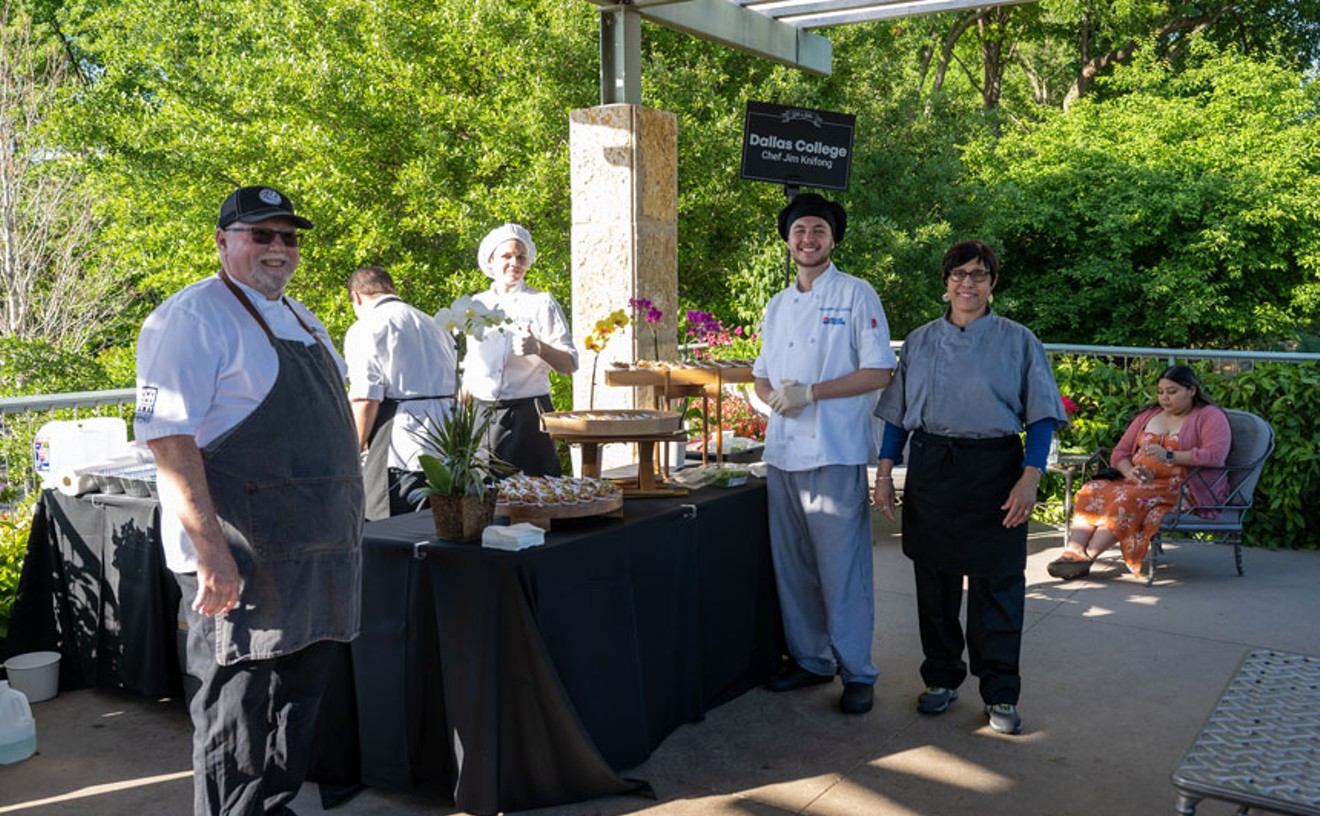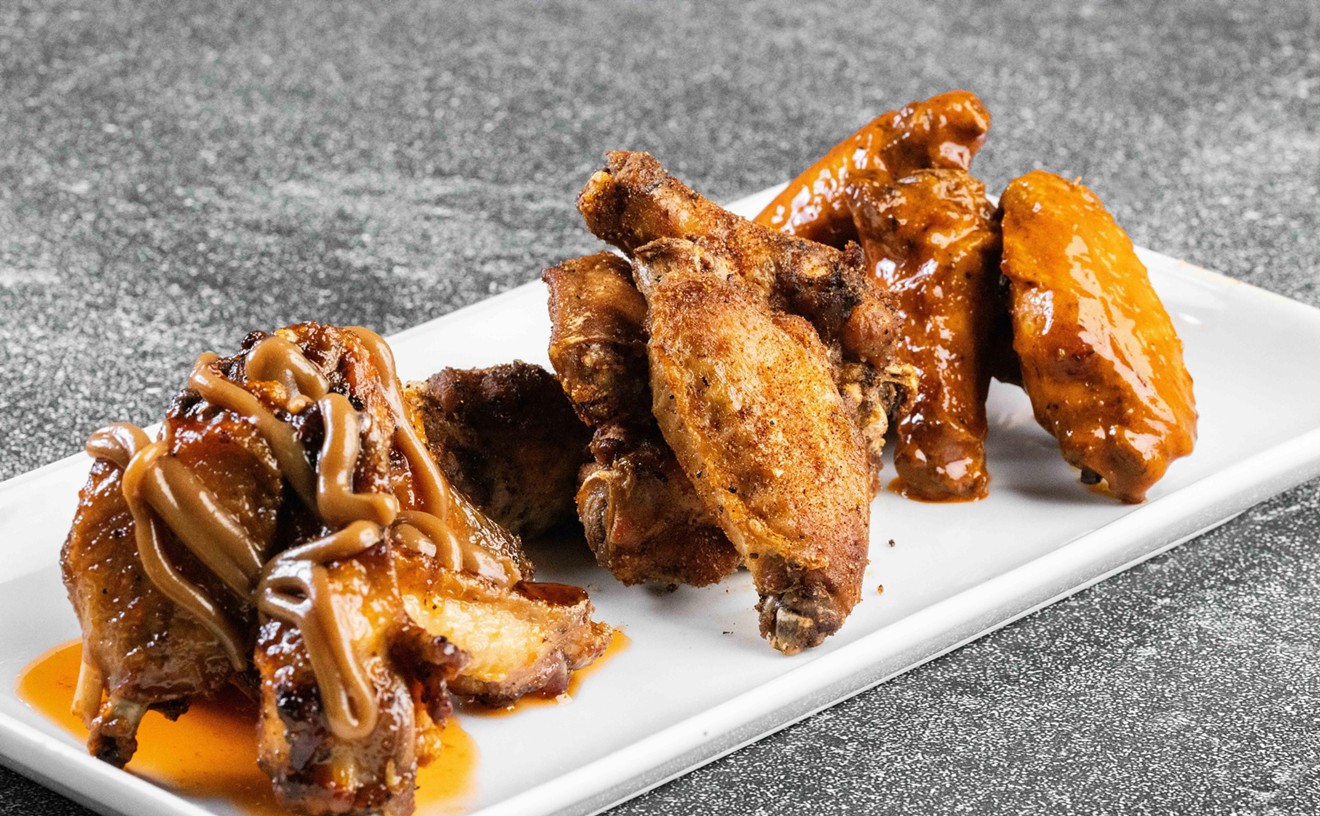I'd like to give a lake of beer to God / I'd love the Heavenly Host to be tippling there for all eternity ... I'd sit with the men, the women of God, there by the lake of beer / We'd be drinking good health forever and every drop would be a prayer.
--From Saint Brigid's "Ale Soliloquy"
I was so impressed by Belhaven's Wee Heavy a couple of weeks ago that I decided to make it the inspiration for my second batch of homebrew. In hope that it might be ready for Saint Patrick's Day, however, I thought I'd try adding some kind of Irish beer element to it.
Probably because of -- or should I say in spite of? -- my own Irish and Scottish ancestry, the idea of combining Scottish and Irish seemed like a good idea. But unlike the generations-long consequences of mixing bloodlines, I'll only have to worry about the results for as long as five gallons of beer will last.
As always, the guys at Homebrew Headquarters in Richardson (a Best of Dallas pick) were very
helpful and thoughtful when I told them my idea. They also politely told me that no, I was not ready for an all-grain recipe with just one previous brewing attempt under my belt.
We started with a
partial-grain recipe for a clone of Belhaven's strong Scottish Ale: 12 oz. British crystal malt, 2 oz. Victory toasted two-row pale malt and 2 oz. of peat-smoked malt. Then, to give it a bit of Irish stout flavor, we added 2 oz. of roasted barley. I thought the 1 tsp. of Irish moss might further boost its Emerald Isle cred, but was quickly dispelled of that notion: turns out the Irish moss used in homebrewing is just a clarifying agent, and doesn't come from Ireland.
After steeping the crushed grains (tied off in a grain bag, sort of like a big cloth teabag) for about half an hour in a couple gallons of hot water, I poured the brown grain-water into my brew bucket through a strainer, then back into the pot, stirred in 10 lb. pale liquid malt extract and waited for it to boil. And waited. It finally boiled after more than an hour, whereupon I added 1 oz. Columbus hops (in pellet form, tied off in a cloth "hop sock"), plus 2 oz. of Blackstrap molasses and 2 oz. Lyle's Golden Syrup in lieu of 4 oz. treacle, a compromise my wife and I settled upon after she tried unsuccessfully to find treacle at three different stores. For the last 15 minutes of the hour-long boil, I added 1/2 oz. U.S. Goldings hops.
The last thing to do was put it back in the fermenting bucket, add enough water to bring it to 5 gallons, cool the wort mix down to 65 to 80 degrees Fahrenheit and pitch two tubes of Edinburgh Scottish Ale yeast. ("Pitching" means adding the hydrated yeast to the wort, then agitating it in order to aerate the mix.)
I was shocked at how long this took. Even with about three gallons of cold water, the mix stayed well over 100 degrees until well after midnight of my brew day, which began in the early afternoon. Finally I stuck the bucket (with lid) outside in the cool night and didn't end up adding the yeast until 3 a.m. By that point I was ready for bed, and my shaking of the heavy bucket was pretty half-assed. As much as the double-dose of yeast cost, it had better do some of this work on its own, I figured.
And it finally did. The next day I checked the bucket's airlock for telltale bubbles about every hour, like some expectant father in a hospital waiting room getting updates on the progress of the childbirth process. After 15 hours, it finally burped, and I excitedly texted Lady Hophead the news: It's a beer!
Now we needed a name. Inspiration came just a few days later at a Feast of Saint Brigid with friends. (Don't worry, I hadn't heard of her either until recently.)
Arnold of Soissons may be the patron saint of Belgian brewers (and
the inspiration for Houston's Saint Arnold Brewing Co.). But Saint
Brigid of Ireland, a composite of stories about Christian Abbess Brigid
of Kildare and older pre-Christian Celtic pagan myths, is another
fascinating character and a patron saint of brewers. According to tradition, this friend of Saint
Patrick had the ability to multiply food -- including beer -- and on
occasion turned her bathwater into ale for lepers and visiting clerics.
Turning bathwater into beer? Sounds an awful lot like homebrewing to
me -- especially considering that my first homebrew attempt spent a few
days fermenting in our bathtub after the pressure blew the lid off the
primary fermenter.
Brigid of Ireland also composed the "Ale Soliloquy," the first and last
stanzas of which are above this post. Her legend was
all the inspiration I needed to name this batch -- and almost enough
to make me wish I'd been raised Catholic.










